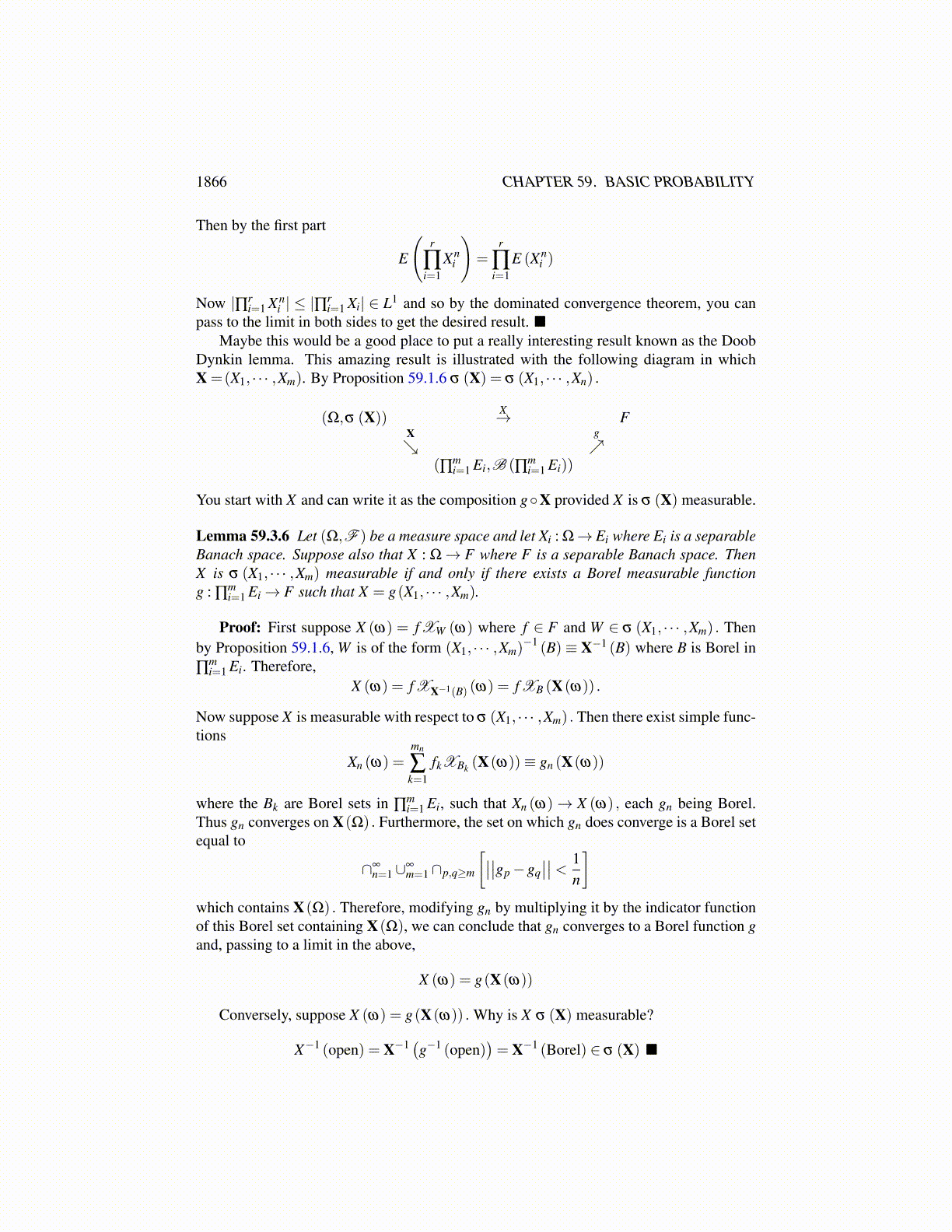
1866 CHAPTER 59. BASIC PROBABILITY
Note that by Lemma 59.3.2 you can consider independent events in terms of indepen-dent σ algebras. That is, a set of independent events can always be considered as eventstaken from a set of independent σ algebras. This is a more general notion because here theσ algebras might have infinitely many sets in them.
Lemma 59.3.4 Suppose the set of random variables, {Xi}i∈I is independent. Also supposeI1 ⊆ I and j /∈ I1. Then the σ algebras σ (Xi : i ∈ I1) , σ (X j) are independent σ algebras.
Proof: Let B ∈ σ (X j) . I want to show that for any A ∈ σ (Xi : i ∈ I1) , it follows thatP(A∩B) = P(A)P(B) . Let K consist of finite intersections of sets of the form X−1
k (Bk)where Bk is a Borel set and k ∈ I1. Thus K is a π system and σ (K ) = σ (Xi : i ∈ I1) .Now if you have one of these sets of the form A = ∩m
k=1X−1k (Bk) where without loss of
generality, it can be assumed the k are distinct since X−1k (Bk)∩X−1
k
(B′k)= X−1
k
(Bk ∩B′k
),
then
P(A∩B) = P(∩m
k=1X−1k (Bk)∩B
)= P(B)
m
∏k=1
P(X−1
k (Bk))
= P(B)P(∩m
k=1X−1k (Bk)
).
Thus K is contained in
G ≡ {A ∈ σ (Xi : i ∈ I1) : P(A∩B) = P(A)P(B)} .
Now G is closed with respect to complements and countable disjoint unions. Here is why:If each Ai ∈ G and the Ai are disjoint,
P((∪∞i=1Ai)∩B) = P(∪∞
i=1 (Ai∩B))
= ∑i
P(Ai∩B) = ∑i
P(Ai)P(B)
= P(B)∑i
P(Ai) = P(B)P(∪∞i=1Ai)
If A ∈ G ,P(AC ∩B
)+P(A∩B) = P(B)
and so
P(AC ∩B
)= P(B)−P(A∩B)
= P(B)−P(A)P(B)
= P(B)(1−P(A)) = P(B)P(AC) .
Therefore, from the lemma on π systems, Lemma 12.12.3 on Page 329, it follows G ⊇σ (K ) = σ (Xi : i ∈ I1).
Lemma 59.3.5 If {Xk}rk=1 are independent random variables having values in Z a sep-
arable metric space, and if gk is a Borel measurable function, then {gk (Xk)}rk=1 is also